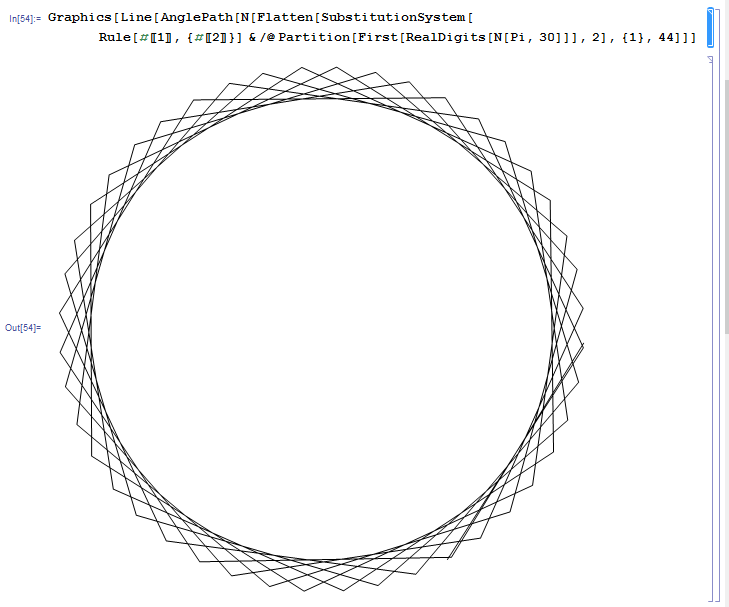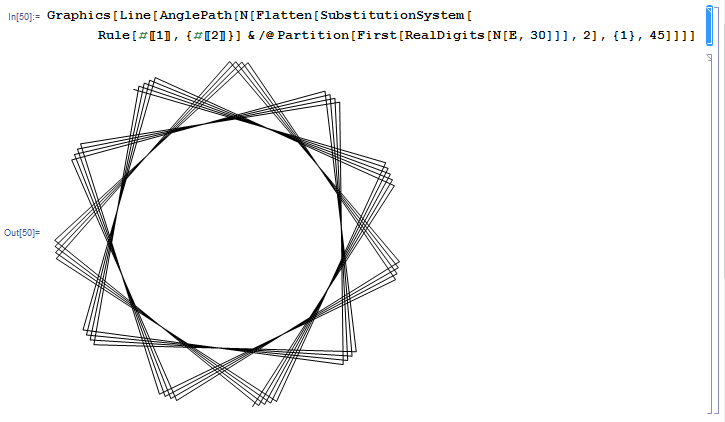Let SubstitutionSystem produce the patterns
Graphics[Line[AnglePath[N[Flatten[SubstitutionSystem[
Rule[#[[1]], {#[[2]]}] & /@ Partition[First[RealDigits[N[Pi, 30]]], 2], {1}, 44]]]]]]

Graphics[Line[AnglePath[N[Flatten[SubstitutionSystem[
Rule[#[[1]], {#[[2]]}] & /@ Partition[First[RealDigits[N[E, 30]]], 2], {1}, 45]]]]]]

the circle number
$\pi$ gives a rounder picture than the Euler number
$e$. One can do thousands of figures
Gaphics[Line[AnglePath[N[Flatten[SubstitutionSystem[
Rule[#[[1]], {#[[2]]}] & /@ Partition[First[RealDigits[N[Pi, 30]]], 2], {7, 3, 2}, 104]]]]]]
one more
Graphics[Line[AnglePath[N[Flatten[SubstitutionSystem[
Rule[#[[1]], {#[[2]]}] & /@ Partition[First[RealDigits[N[E, 30]]], 2], First[RealDigits[N[E, 3]]], 45]]]]]]
imposing as

Or doing something ill-looking
Graphics[Line[AnglePath[N[Flatten[SubstitutionSystem[
Rule[#[[1]], {#[[2]]}] & /@ Partition[First[RealDigits[N[E, 30]]], 2], First[RealDigits[N[E \[Pi], 133]]], 45]]]]]]
